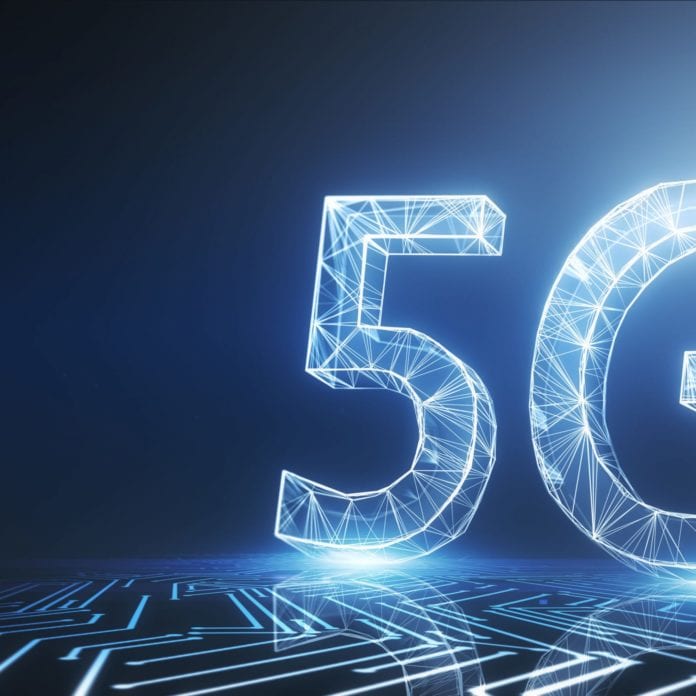The Japanese government assigned the three largest mobile operators in Japan — NTT Docomo, KDDI au and Softbank, as well as new arrival Rakuten Mobile — 5G spectrum in April 2019.
In the coming years, the four Japanese carriers are expected to spend more than $14 billion combined in capital expenditures, including investments in base stations, servers and fiber optics, to build out their 5G networks.
Data gathered by Fitch Research indicates that 5G will become the dominant cellular technology in Japan by 2026 and that by 2029, there will be roughly 45 million 4G subscriptions and more than 151 million 5G subscriptions in the country.
NTT Docomo
Japan’s oldest carrier, NTT DoCoMo, began 5G research in 2010 and officially launched commercial services in Japan in March 2020, with an initial maximum data rate of 3.4 Gbps. At the time of the launch, the carrier said its coverage included roughly 150 locations nationwide and that by March of this year, more than 500 cities are expected to have access to the next-generation network.
The company plan is to invest over $7 billion to expand its network to 97% of the populated areas of the country by 2025, as well as install 8,001 base stations in the 3.7GHz and 4.5GHz spectrum bands and 5,001 base stations in the 28GHz band.
As early as 2017, DoCoMo, in partnership with Ericsson, demonstrated what was called the world’s first 5G network slicing solution supporting multiple network slices on the same device at 5G Tokyo Bay Summit 2017.
In August 2020, the company’s President and CEO Kazuhiro Yoshizawa said during a conference call with investors that DoCoMo ended the month with a total of 240,000 subscribers in the 5G segment and that it is still targeting 2.4 million 5G subscribers by the end of March 2021.
The carrier expects to reach 10,000 5G sites by June 2021 and 20,000 by March 2022.
KDDI au
KDDI au also launched 5G commercial services in March 2020, only one day after DoCoMo, in fact. The initial launch covered only a limited area of Japan, but by 2025, the company plans to invest over $4 billion to expand its network to roughly 93% of the populated areas of the country, as well as install 30,107 base stations in the 3.7GHz and 4.5GHz spectrum bands and 12,756 base stations in the 28GHz band.
The carrier has selected Ericsson’s cloud-native dual-mode 5G core to launch standalone 5G services after having worked with the Swedish vendor in the area of 5G for years. In February 2020, the pair achieved a cloud-native 5G Continuous Integration/Continuous Delivery (CI/CD) pipeline “breakthrough.”
For the demonstration, Ericsson tested the deployment of software for KDDI’s 5G core and found that the CI/CD pipeline speeds up the software acceptance process thank to advanced automation of software distribution, deployment, validation and feedback.
Last July, however, KDDI executives expressed concern on an earnings call over its low 5G subscriptions numbers, which the company said was a result of the pandemic.
“We have a huge sense of crisis here about au 5G,” Executive Vice President Takashi said on the call. “We are trying to think of various factors … as of today I cannot clearly say our plan.”
The carrier has not been very forthcoming about its number of 5G subscribers.
SoftBank
One day after KDDI’s launch, and therefore, two days after DoCoMo’s, SoftBank joined the 5G party, announcing the availability of its 5G network on March 27th, 2020. The company plans to invest over $1.9 billion to expand its network to roughly 64% of the populated areas of country by 2025 and install 7,355 base stations in the 3.7GHz and 4.5GHz spectrum bands and 3,855 base stations in the 28GHz band.
SoftBank selected Nordic vendors Ericsson and Nokia last year for the deployment of its network. Collaboration between SoftBank and Ericsson, in particular, began in 2015 and included 5G testing of multiple bands, including 28 GHz and 4.5 GHz. Nokia is providing the carrier with its 5G AirScale solution.
Perhaps a more interesting partnership is the one between SoftBank and rival KDDI, in which they established a joint venture to promote the deployment of 5G in rural areas across Japan. The joint venture, dubbed 5G JAPAN Corporation (5G JAPAN), is based on a previous agreement announced by the two carriers in July 2019.
5G JAPAN will promote infrastructure sharing based on the mutual use of base station assets held by SoftBank and KDDI to accelerate the rollout of 5G networks in rural Japan, as well as conduct construction design and construction management work for 5G base stations.
“SoftBank and KDDI will rapidly construct 5G networks that serve all industries. Both companies will do this with the aim of raising Japan’s international competitiveness by contributing to its industrial development, regional revitalization and national resilience,” the two companies said.
Rakuten Mobile
Rakuten Mobile launched its 5G service in parts of six prefectures in Japan in September 2020, a milestone originally planned for June, but was delayed due to COVID-19. At the same time as the 5G launch, the company also announced a new Rakuten 5G smartphone that supports both sub-6GHz and mmWave spectrum.
Rakuten claims to have launched the world’s first fully virtualized mobile network that uses lower-cost and more up-to-date cloud and software technologies. This, according to the carrier, allows it to offer more affordable services to its users by reducing capital investment and operation costs. In fact, company Chairman and CEO Mickey Mikitani said Rakuten’s 5G offering is 71% cheaper than its than rivals’.
Rakuten is offering its 5G service, as well as its 4G service for free for one year to the first 3 million subscribers who sign up. As of early March 2021, the carrier said it has already surpassed the 3 million mark.
Mikitani said Rakuten would likely achieve nationwide coverage by the middle of 2021 and intends to launch standalone 5G in Q2.

